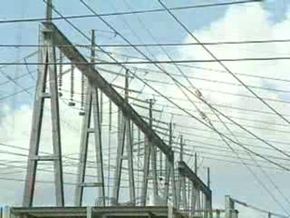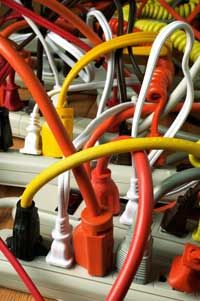Most surge protectors work by diverting the extra voltage to the outlet's ground line from the hot line. One surge protector design uses a gas discharge arrestor to create this diversion.
In a gas discharge arrestor, an inert gas sits between the hot line and ground line connecting an electric appliance to the wall. When the voltage running on the hot line is within the proper bounds, the gas remains inert and is thus a poor conductor of electricity. However, if there is a power surge (defined as an excess of voltage lasting at least three nanoseconds), the increased voltage ionizes the gas. Once the gas becomes ionized, it can now easily conduct electricity. The gas diverts the extra voltage into the ground line and lets the proper voltage continue to flow to the appliance. This allows your appliances to continue to run during a power surge when a surge protector is used. Once the power surge passes, the gas becomes inert again and stops drawing off electric voltage.
Advertisement
Gas discharge arrestors are used in a surge protector with a parallel circuit design, as is another diversion method called a metal oxide varistor (MOV). An MOV doesn't use gas to divert the extra voltage; rather, it uses a piece of metal oxide instead. Some surge protectors don't use either of these methods, but have a series circuit design. A series circuit design surge protector doesn't divert the extra voltage to a different line at all, but instead slows the flow of the electric current during a power surge. Manufacturers of the series circuit design contend that these surge protectors are more effective because they can react more quickly to a power surge and don't dump extra electricity into the ground line, which can adversely affect the entire electrical system.



